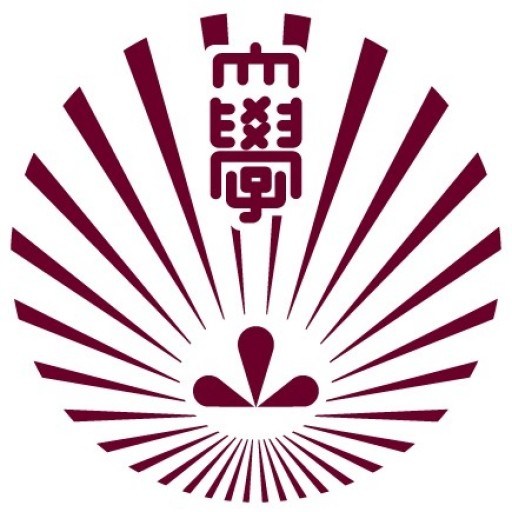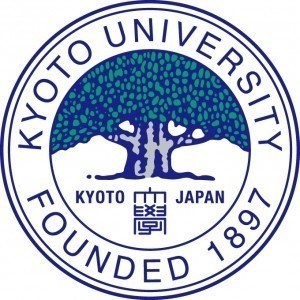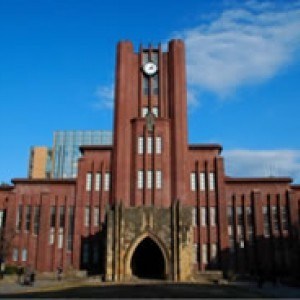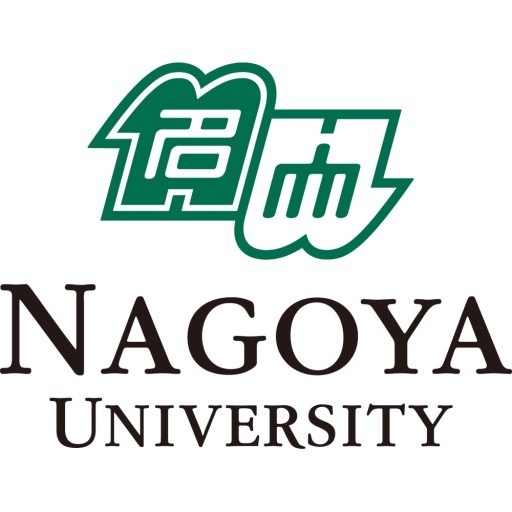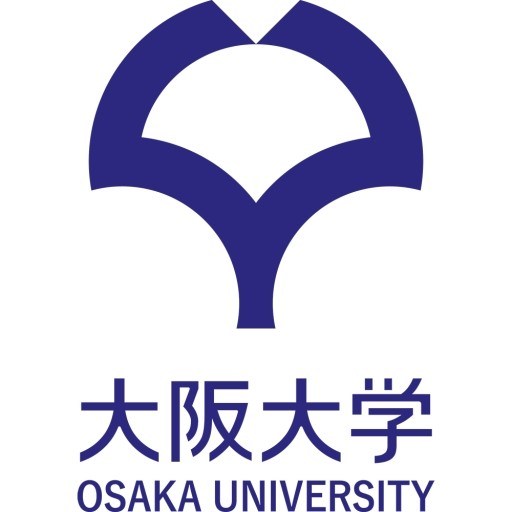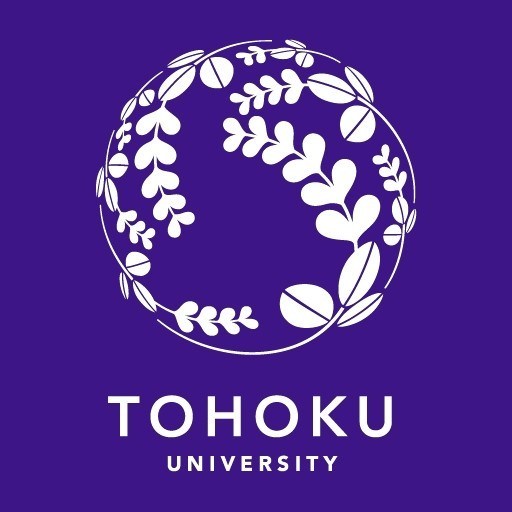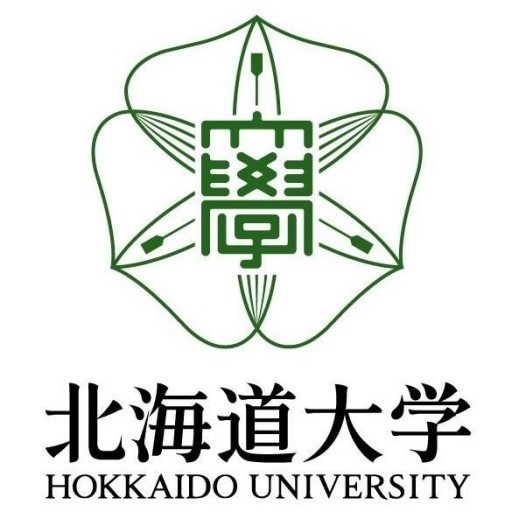Photos of university
The Integrated Science for Global Society (ISGS) program at Kyushu University is a cutting-edge interdisciplinary undergraduate course designed to equip students with the comprehensive knowledge and practical skills necessary to address complex global challenges. This innovative program emphasizes the integration of natural sciences, social sciences, and humanities, fostering a holistic understanding of issues such as climate change, sustainable development, technological innovation, and societal resilience. Students are encouraged to think critically and creatively, engaging in rigorous coursework, collaborative projects, and research activities that span multiple disciplines. The curriculum is structured to develop both theoretical foundations and practical competencies, including data analysis, problem-solving, policy development, and effective communication. Throughout their studies, students have opportunities to participate in international exchanges, seminars, and workshops, broadening their perspectives and enhancing cross-cultural understanding. The program emphasizes a hands-on approach, often involving fieldwork, laboratory experiments, and community engagement, to ensure graduates are well-prepared to contribute meaningfully to global society. Graduates of ISGS will be equipped with the interdisciplinary mindset and skills essential for careers in research, policy-making, consulting, and leadership roles in government agencies, NGOs, and private sector organizations. By fostering a collaborative learning environment and encouraging innovative approaches, Kyushu University’s ISGS program aims to cultivate future leaders who are capable of developing sustainable solutions for a better world.
To obtain a Master's degree at ISGS, students must complete at least 33 credits that meet the following requirements.
- Common Subjects. 4 credits are required from common subjects.
- Basic Subjects. At least 6 credits are required from basic subjects, including at least 2 credits from "Comprehensive East Asian and Japanese Studies A" or "Comprehensive East Asian and Japanese Studies C".
- Specialized Subjects. A total of 7 credits are required from "Field Research and PracticumA", "Thesis Advising ⅠA", "Thesis Advising Ⅱ", and "Thesis Advising Ⅲ".At least 6 credit are required from "Integrated Seminar" and from "Seminar" respectively.
- Students can include up to a maximum of 4 credits from the class subjects specified in the appended table 2-②, as credits required for the completion of the course.
Common Subjects
- Tutorial Ⅰ 1
- Tutorial Ⅱ 1
- Integrated Sciences for Global Society
Basic Subjects
- Comprehensive Earth Sciences A 2
- Comprehensive Earth Sciences B 2
- Comprehensive Earth Sciences C 2
- Comprehensive Earth Sciences D 2
- Comprehensive Science of Biological Environment C 2
- Comprehensive Science of Biological Environment D 2
- International Cooperation, Security and Safety B 2
- Social Diversity and Coexistence B 2
- Language, Media and Communication A 2
- Comprehensive East Asian and Japanese Studies A 2
- Comprehensive East Asian and Japanese Studies C
Individual
- Field Research and Practicum 1
- Thesis AdvisingⅠ 2
- Thesis Advising Ⅱ 2
- Thesis Advising Ⅲ
Specialized Subjects
Integrated Seminar
- Integrated Seminar (Comprehensive Earth Sciences) Ⅰ 2
- Integrated Seminar (Comprehensive Earth Sciences) Ⅱ 2
- Integrated Seminar (Comprehensive Earth Sciences) Ⅲ 2
- Integrated Seminar (Comprehensive Earth Sciences) Ⅳ 2
- Integrated Seminar (Comprehensive Science of Biological Environment) Ⅰ 2
- Integrated Seminar (Comprehensive Science of Biological Environment) Ⅱ 2
- Integrated Seminar (Comprehensive Science of Biological Environment) Ⅲ 2
- Integrated Seminar (Comprehensive Science of Biological Environment) Ⅳ 2
- Integrated Seminar (International Cooperation, Security and Safety) AⅠ 2
- Integrated Seminar (International Cooperation, Security and Safety) AⅡ 2
- Integrated Seminar (International Cooperation, Security and Safety) AⅢ 2
- Integrated Seminar (International Cooperation, Security and Safety) AⅣ 2
- Integrated Seminar (Social Diversity and Coexistence) Ⅰ 2
- Integrated Seminar (Social Diversity and Coexistence) Ⅱ 2
- Integrated Seminar (Social Diversity and Coexistence) Ⅲ 2
- Integrated Seminar (Social Diversity and Coexistence) Ⅳ 2
- Integrated Seminar (Language, Media and Communication) AⅠ 2
- Integrated Seminar (Language, Media and Communication) AⅡ 2
- Integrated Seminar (Language, Media and Communication) AⅢ 2
- Integrated Seminar (Language, Media and Communication) AⅣ 2
- Integrated Seminar (Comprehensive East Asian and Japanese Studies) AⅠ 2
- Integrated Seminar (Comprehensive East Asian and Japanese Studies) AⅡ 2
- Integrated Seminar (Comprehensive East Asian and Japanese Studies) AⅢ 2
- Integrated Seminar (Comprehensive East Asian and Japanese Studies) AⅣ 2
- Integrated Seminar (Comprehensive East Asian and Japanese Studies) BⅠ 2
- Integrated Seminar (Comprehensive East Asian and Japanese Studies) BⅡ 2
- Integrated Seminar (Comprehensive East Asian and Japanese Studies) BⅢ 2
- Integrated Seminar (Comprehensive East Asian and Japanese Studies) BⅣ 2
- Integrated Seminar (Comprehensive East Asian and Japanese Studies) CⅠ 2
- Integrated Seminar (Comprehensive East Asian and Japanese Studies) CⅡ 2
- Integrated Seminar (Comprehensive East Asian and Japanese Studies) CⅢ 2
- Integrated Seminar (Comprehensive East Asian and Japanese Studies) CⅣ
Seminar
- Evolution of crustal materials Ⅰ 2
- Evolution of crustal materials Ⅱ 2
- Evolution of crustal materials Ⅲ 2
- Evolution of crustal materials Ⅳ 2
- Geologic Evolution in Polar Region Ⅰ 2
- Geologic Evolution in Polar Region Ⅱ 2
- Geologic Evolution in Polar Region Ⅲ 2
- Geologic Evolution in Polar Region Ⅳ 2
- Seafloor Dynamics in Polar Region Ⅰ 2
- Seafloor Dynamics in Polar Region Ⅱ 2
- Seafloor Dynamics in Polar Region Ⅲ 2
- Seafloor Dynamics in Polar Region Ⅳ 2
- Earth Material Sciences in Polar Region Ⅰ 2
- Earth Material Sciences in Polar Region Ⅱ 2
- Earth Material Sciences in Polar Region Ⅲ 2
- Earth Material Sciences in Polar Region Ⅳ 2
- Earth and Planetary Material Sciences Ⅰ 2
- Earth and Planetary Material Sciences Ⅱ 2
- Earth and Planetary Material Sciences Ⅲ 2
- Earth and Planetary Material Sciences Ⅳ 2
- Evolution of Global Environment Ⅰ 2
- Evolution of Global Environment Ⅱ 2
- Evolution of Global Environment Ⅲ 2
- Evolution of Global Environment Ⅳ 2
- Global Environment Conservation Ⅰ 2
- Global Environment Conservation Ⅱ 2
- Global Environment Conservation Ⅲ 2
- Global Environment Conservation Ⅳ 2
- Evolution of the Earth Ⅰ 2
- Evolution of the Earth Ⅱ 2
- Evolution of the Earth Ⅲ 2
- Evolution of the Earth Ⅳ 2
- Biodiversity Science A (Plant Diversity) Ⅰ 2
- Biodiversity Science A (Plant Diversity) Ⅱ 2
- Biodiversity Science A (Plant Diversity) Ⅲ 2
- Biodiversity Science A (Plant Diversity) Ⅳ 2
- Biodiversity Science B (Animal Diversity) Ⅰ 2
- Biodiversity Science B (Animal Diversity) Ⅱ 2
- Biodiversity Science B (Animal Diversity) Ⅲ 2
- Biodiversity Science B (Animal Diversity) Ⅳ
- Environmental microbiology Ⅰ 2
- Environmental microbiology Ⅱ 2
- Environmental microbiology Ⅲ 2
- Environmental microbiology Ⅳ 2
- Biodiversity Science D (Ecological Risk Management) Ⅰ 2
- Biodiversity Science D (Ecological Risk Management) Ⅱ 2
- Biodiversity Science D (Ecological Risk Management) Ⅲ 2
- Biodiversity Science D (Ecological Risk Management) Ⅳ 2
- Biological Inventory Science A (An introduction to Systematic Zoology) Ⅰ 2
- Biological Inventory Science A (An introduction to Systematic Zoology) Ⅱ 2
- Biological Inventory Science A (An introduction to Systematic Zoology) Ⅲ 2
- Biological Inventory Science A (An introduction to Systematic Zoology) Ⅳ 2
- Biological Inventory Science B (Inventory Study on the Soil Animals and the Beetles) Ⅰ 2
- Biological Inventory Science B (Inventory Study on the Soil Animals and the Beetles) Ⅱ 2
- Biological Inventory Science B (Inventory Study on the Soil Animals and the Beetles) Ⅲ 2
- Biological Inventory Science B (Inventory Study on the Soil Animals and the Beetles) Ⅳ 2
- Biological Inventory Science C (An introduction to Phylogeography) Ⅰ 2
- Biological Inventory Science C (An introduction to Phylogeography) Ⅱ 2
- Biological Inventory Science C (An introduction to Phylogeography) Ⅲ 2
- Biological Inventory Science C (An introduction to Phylogeography) Ⅳ 2
- International Cooperation Ⅰ 2
- International Cooperation Ⅱ 2
- International Cooperation Ⅲ 2
- International Cooperation Ⅳ 2
- Conflict and Peace Building Ⅰ 2
- Conflict and Peace Building Ⅱ 2
- Conflict and Peace Building Ⅲ 2
- Conflict and Peace Building Ⅳ 2
- Diversity and Group Process Ⅰ 2
- Diversity and Group Process Ⅱ 2
- Diversity and Group Process Ⅲ 2
- Diversity and Group Process Ⅳ 2
- Cultural Studies Ⅰ 2
- Cultural Studies Ⅱ 2
- Cultural Studies Ⅲ 2
- Cultural Studies Ⅳ 2
- Gender and Cultural History Ⅰ 2
- Gender and Cultural History Ⅱ 2
- Gender and Cultural History Ⅲ 2
- Gender and Cultural History Ⅳ
- Speech Communication A (Argumentation and Debate) Ⅰ 2
- Speech Communication A (Argumentation and Debate) Ⅱ 2
- Speech Communication A (Argumentation and Debate) Ⅲ 2
- Speech Communication A (Argumentation and Debate) Ⅳ 2
- Linguistic Pragmatics Ⅰ 2
- Linguistic Pragmatics Ⅱ 2
- Linguistic Pragmatics Ⅲ 2
- Linguistic Pragmatics Ⅳ 2
- Multicultural Education A (Language Acquisition) Ⅰ 2
- Multicultural Education A (Language Acquisition) Ⅱ 2
- Multicultural Education A (Language Acquisition) Ⅲ 2
- Multicultural Education A (Language Acquisition) Ⅳ 2
- Multicultural Education B(Approaches and Methods in Second Language Teaching) Ⅰ 2
- Multicultural Education B(Approaches and Methods in Second Language Teaching) Ⅱ 2
- Multicultural Education B(Approaches and Methods in Second Language Teaching) Ⅲ 2
- Multicultural Education B(Approaches and Methods in Second Language Teaching) Ⅳ 2
- Multicultural Education D(Media and Language Education) Ⅰ 2
- Multicultural Education D(Media and Language Education) Ⅱ 2
- Multicultural Education D(Media and Language Education) Ⅲ 2
- Multicultural Education D(Media and Language Education) Ⅳ 2
- Biological Anthropology Ⅰ 2
- Biological Anthropology Ⅱ 2
- Biological Anthropology Ⅲ 2
- Biological Anthropology Ⅳ 2
- Fundamentals in Social Archaeology Ⅰ 2
- Fundamentals in Social Archaeology Ⅱ 2
- Fundamentals in Social Archaeology Ⅲ 2
- Fundamentals in Social Archaeology Ⅳ 2
- Study on Chinese Cultural Sphere Ⅰ 2
- Study on Chinese Cultural Sphere Ⅱ 2
- Study on Chinese Cultural Sphere Ⅲ 2
- Study on Chinese Cultural Sphere Ⅳ 2
- Modern Japan in East Asian History Ⅰ 2
- Modern Japan in East Asian History Ⅱ 2
- Modern Japan in East Asian History Ⅲ 2
- Modern Japan in East Asian History Ⅳ 2
- Modern Japanese History Ⅰ 2
- Modern Japanese History Ⅱ 2
- Modern Japanese History Ⅲ 2
- Modern Japanese History Ⅳ 2
- Overseas Chinese and Transnational Asia Ⅰ 2
- Overseas Chinese and Transnational Asia Ⅱ 2
- Overseas Chinese and Transnational Asia Ⅲ 2
- Overseas Chinese and Transnational Asia Ⅳ 2
- Regional Architecture in Asia Ⅰ 2
- Regional Architecture in Asia Ⅱ 2
- Regional Architecture in Asia Ⅲ 2
- Regional Architecture in Asia Ⅳ 2
- Transnational Migration in Asia Ⅰ 2
- Transnational Migration in Asia Ⅱ 2
- Transnational Migration in Asia Ⅲ 2
- Transnational Migration in Asia Ⅳ
Appended table 2-② : Integrated seminar of History Core Division Course
- Integrated Seminar(History Core Division Course)AⅠ
- Integrated Seminar(History Core Division Course)AⅡ
- Integrated Seminar(History Core Division Course)AⅢ
- Integrated Seminar(History Core Division Course)AⅣ
- Integrated Seminar(History Core Division Course)DⅠ
- Integrated Seminar(History Core Division Course)DⅡ
- Integrated Seminar(History Core Division Course)DⅢ
- Integrated Seminar(History Core Division Course)DⅣ
- Application Fee (30,000 yen)
- Final Application Form: Fill out the form provided at the ISGS website. Attach a picture of yourself taken within the past three months before application, from the chest up, hatless, size 3.5cm tall and 3cm wide.
- Graduation certificate, proof of status as a candidate for graduation, or certificate of credits achieved: Submit a certificate of graduation (or candidacy for graduation) from your previous college or department, or a certificate stating credits earned from your institution of higher learning.
- Transcript of grades: Submit an official copy produced by your college, in a sealed envelope.
- Summary of Research Plan: Using the form provided by the ISGS Office, write a “Summary of Research Plan”, using no more than 270 words written in English. Include one original and four copies.
- Research Plan: Include one original and four copies, on letter or A4 sized paper. Staple each copy of the “Summary of Research Plan” to a copy of the “Research Plan”, so there is a total of five sets stapled together.
- The return envelope for result: On the envelope marked “Return Envelope” enclosed with these recruitment materials, fill in your name and address. No posted stamps are required.
- Proof of residency status: Foreign applicants who are currently living in Japan, submit a “Certificate of Residence” (Juminhyo) which proves your resident status and length of stay at your municipal government office. For those who are coming from overseas, submit a photocopy of your passport. Also bring a copy of your passport to the ISGS Office on the day of the test.
The financing of the Integrated Science for Global Society program at Kyushu University is primarily supported through a combination of national and institutional funding sources. The university allocates budget resources annually to ensure the sustainability and development of this interdisciplinary program, emphasizing the importance of fostering global scientific collaborations and research initiatives. Students enrolled in the program may benefit from various scholarship options, including government-sponsored scholarships such as the MEXT (Ministry of Education, Culture, Sports, Science and Technology) scholarships for international students, as well as university-specific scholarships aimed at promoting diversity and academic excellence. Additionally, competitive fellowship programs and research grants are available to outstanding students and researchers involved in the program’s projects. The program also encourages international cooperation and industry partnerships, which may provide additional funding avenues to support collaborative research activities, internships, and technology transfer initiatives. The financial structure is designed to accommodate both domestic and international students, with tuition fees set in accordance with Kyushu University’s standard rates, while offering financial aid to those in need through various scholarship and assistance programs. Furthermore, the program emphasizes the importance of self-sustainability through research grants and external funding sources, including grants from scientific organizations and government agencies dedicated to advancing interdisciplinary science and global challenges. Overall, the program’s financing strategy aims to provide a robust financial foundation that supports high-quality education, cutting-edge research, and international exchange activities, ensuring broad accessibility and the continuous growth of the integrated scientific community at Kyushu University.
Integrated Science for Global Society at Kyushu University is an innovative interdisciplinary program designed to equip students with the knowledge and skills necessary to tackle complex global issues. The program emphasizes the integration of natural sciences, engineering, social sciences, and humanities to foster a comprehensive understanding of scientific and technological challenges faced by society today and in the future. Students in this program engage in coursework that encourages critical thinking, problem-solving, and collaborative approaches, preparing them to contribute effectively in global contexts. The curriculum includes a combination of foundational science courses, such as physics, chemistry, and biology, alongside studies in environmental science, sustainability, data analysis, and policy-making. The program also offers opportunities for research, internships, and international exchanges, enabling students to gain practical experience and cultural awareness. Through this multidisciplinary approach, graduates are expected to develop a holistic perspective on issues like climate change, resource management, health, and technological innovation, making them well-suited for careers in academia, industry, government, and international organizations dedicated to creating sustainable solutions for global society.
